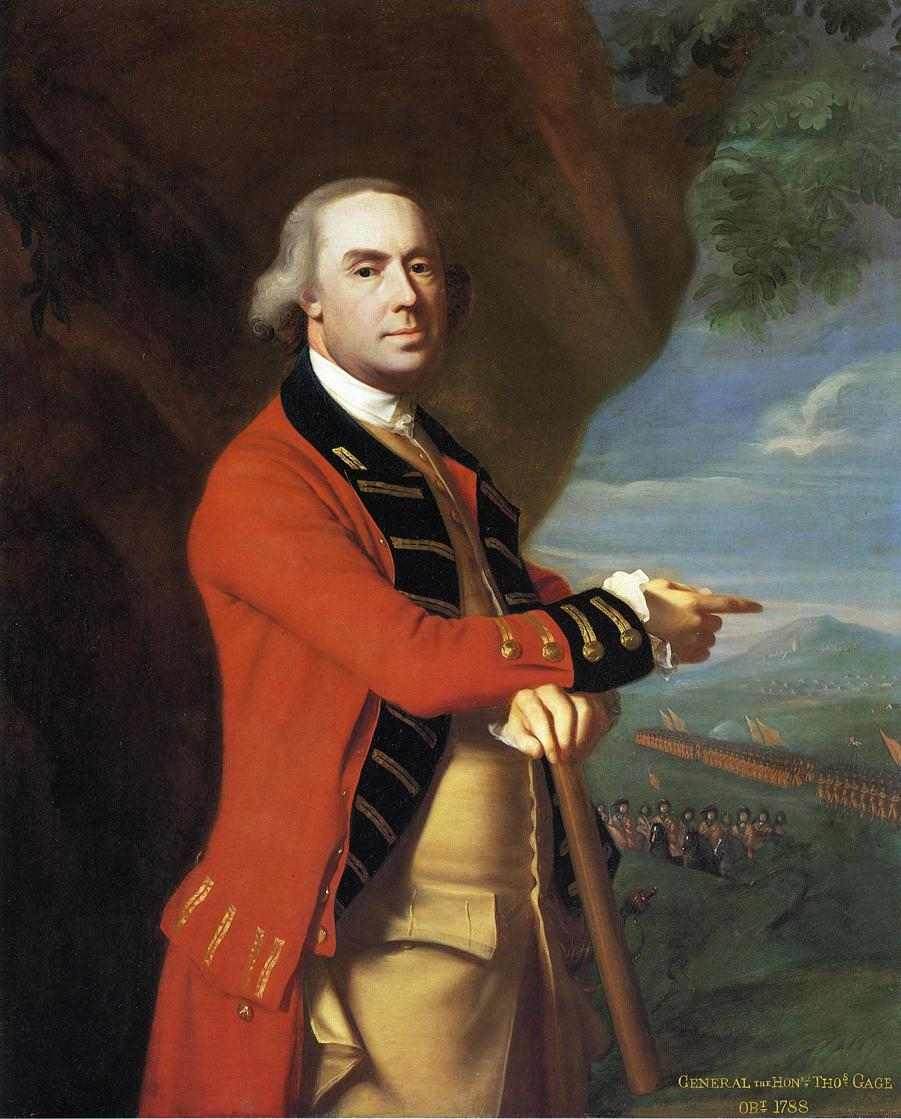On This Day in History -
October 10, 1775
General William Howe replaces Lt. General Thomas Gage
On this day in history, October 10, 1775, General William Howe replaces Lt. General Thomas Gage as Commander-in-Chief of British forces in North America. Gage and Howe were the first two generals in charge of British forces during the American Revolution. A third, General Henry Clinton, would replace Howe in 1778.
Thomas Gage made a name for himself during the French and Indian War. He was part of General Edward Braddock's Expeditionary Force sent to drive the French out of the Ohio Valley in 1755. General Braddock was killed at the Battle of the Monongahela and Gage was injured. This battle also made George Washington famous for his organization of a successful retreat.
Gage went on to serve in several battles of the French and Indian War and eventually was made the military governor of the newly conquered Montreal, where Gage proved himself a smart administrator. He was soon appointed interim Commander-in-Chief of British forces in North America. When the previous commander decided not to return, Gage was given the position permanently.
The American rebellion rose during his tenure and Gage's understanding of the Americans led to many of the British policies that only made things worse. Gage sent troops to Boston in 1768 to enforce the Townshend Acts, resulting in the Boston Massacre in 1770. After the Boston Tea Party, Gage recommended the suspension of democratic town meetings in Massachusetts and the closure of its legislature. Gage was made military governor of Massachusetts in 1774. He confiscated military supplies at Somerville that fall which nearly ignited the war. The following April, Gage sent troops to confiscate the rebel munitions at Concord. The war began as colonists came out to defend themselves.
After the battles of Lexington and Concord in April 1775, more troops were sent to Boston, along with Generals William Howe, Henry Clinton and John Burgoyne. Boston was surrounded and the generals planned to break out of the city by attacking several points, including Bunker Hill on the nearby Charlestown Peninsula. When the rebels learned of the plan, they fortified the peninsula and fought the British for it on June 17. The British won the Battle of Bunker Hill, but lost 1,000 men in the process.
After receiving news of the horrible "victory," Lord Dartmouth, the British Secretary of State for the Colonies, called for Gage's termination. General William Howe was named as Gage's replacement and the transfer of power took place on October 10, with Gage departing for England the next day.
General Howe did not fare much better than Gage against the Americans. After being driven from Boston when George Washington fortified Dorchester Heights with cannons from Fort Ticonderoga, Howe successfully invaded New York and defeated the Continental Army at the Battle of Long Island. Howe then drove Washington across New Jersey and into Pennsylvania. Washington successfully struck back though at the Christmastime battles of Trenton and Princeton.
In the fall of 1777, Howe captured Philadelphia, defeating the Continentals in two decisive battles at Brandywine and Germantown. The victory, however, was bittersweet. Howe had chosen to go to Philadelphia instead of helping General Burgoyne in New York. Burgoyne was forced into surrendering an army of 7,000 men at the Battle of Saratoga. Many scholars believe Howe hoped to receive the glory of conquering Philadelphia and was afraid that Burgoyne would upstage him if he won a battle in New York.
Knowing he would be blamed for Burgoyne's surrender, Howe sent a letter of resignation to London in October. He received notice in April, 1778, that General Clinton would replace him. Howe's soldiers threw him a grand festival called the "Mischianza" before he left because he was so well liked. General Clinton took over on May 24, the same day Howe sailed for England. Clinton would serve as Commander-in-Chief through the rest of the war, right up to the British defeat at the end.
- Read what happened on other days in American history at our On This Day in History section here
This Week in History
- October 10, 1775 - William Howe replaces Thomas Gage
- October 11, 1776 - The Battle of Valcour Island begins
- October 12, 1776 - British troops sail up the East River
- October 13, 1792 - George Washington lays cornerstone of the White House
- October 14, 1780 - The Battle of Shallow Ford
- October 15, 1778 - The Affair at Little Egg Harbor
- October 16, 1780 - The Royalton Raid
Published 10/10/13
Return to top of William Howe replaces Thomas Gage
Revolutionary War and Beyond Home
Like This Page?
© 2008 - 2022 Revolutionary-War-and-Beyond.com Dan & Jax Bubis













Facebook Comments